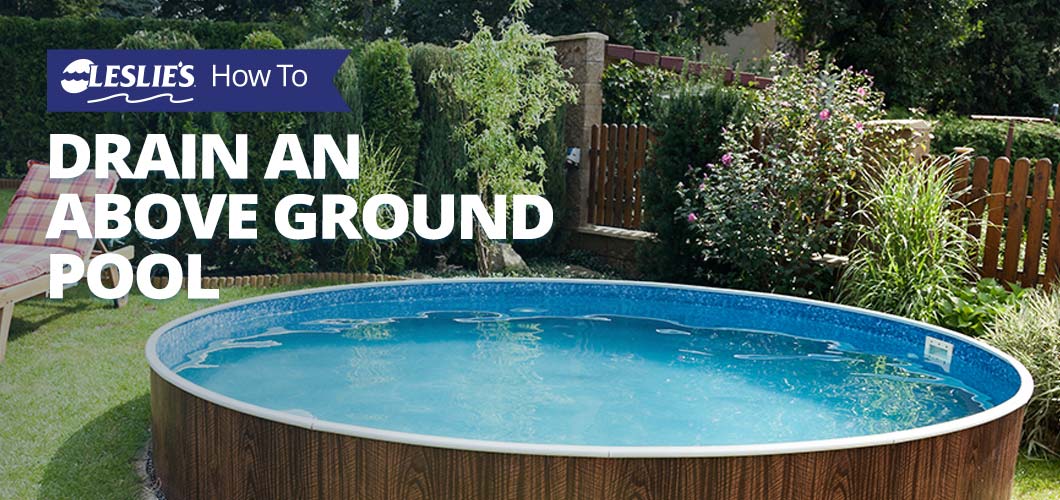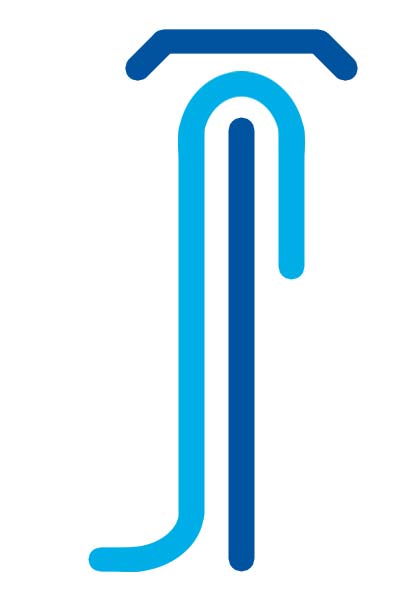
How to Drain an Above Ground Pool
Proper maintenance on an above ground pool is key to ensuring your enjoyment of it for many years. Staying on top of water chemistry and liner integrity will help extend the longevity of your pool. However, situations may arise that require draining your pool. In this post, we'll teach you the four simple steps to efficiently and successfully drain your above ground pool.
Why Should You Drain an Above Ground Pool?
Before you consider draining the pool, it’s important to understand the reasons why a pool owner might do so. These include:

High Total Dissolved Solids, Calcium Hardness, or Cyanuric Acid levels

Replacing or repairing the vinyl pool liner

Draining a soft-sided pool for storage during the winter months
If you’re draining the water because of a water balance issue, exercise caution. Emptying the pool completely increases the risk of damage to your existing vinyl liner. In most instances, we recommend only draining a few feet of water at a time, then refilling the pool. This method will help dilute high levels of Total Dissolved Solids, Calcium Hardness, and Cyanuric Acid while preserving the integrity of your liner.
BONUS TIP: Unsure about draining your above ground pool? Bring a water sample to your local Leslie’s for a free in-store AccuBlue® 10-point water analysis and treatment plan. We can help you get your water back on track, or provide guidance on next steps, which may include draining the pool.
Job Materials
To drain your above ground pool, you will need:
- Submersible pump
- Discharge or garden hose
- Water test kit
- Screwdriver (if needed for hose clamp)
Step 1: Prepare for draining
Be sure to properly prepare for where your pool water will be draining. If you plan to use a storm drain, double-check local regulations on draining water. If draining in your yard, check the water balance first. Some aspects of water chemistry can be detrimental to plants and landscaping. Use a test strip or test kit to check if the water is within these recommended ranges:
- Chlorine: 4.0 ppm or less
- pH: 7.2–7.8
Step 2: Get the submersible pump ready
Securely attach the discharge hose or garden hose to the proper place on the submersible pump. There may be a clamp included that you will need to screw on tightly over the hose. Once attached, lead the other end of the hose to the determined draining area.
Plug the submersible pump into an outlet, then lower the pump into the water so it’s resting on the floor of the pool.
Certain soft-sided pools include a drain plug near the bottom of the pool. In these cases, you may not even need to use a submersible pump. However, using one can help expedite the process, and it will allow you greater flexibility in where you drain the water.
Step 3: Drain the water
Let the submersible pump run until the desired amount of water has been drained from your above ground pool. If you're doing a full drain, and the pump doesn’t drain the entire pool, or if you notice water remaining in the bottom, there’s one more step you’ll need to take. Use a bucket or other container to finish draining the rest of the pool.
Remember, if you have a “fast set” or soft-sided pool, the sides will collapse down as the water level drops.
BONUS TIP: If you drain the pool into your yard, avoid flooding one location. Move the end of the drain hose around the yard to water landscaping features and allow the soil adequate time to soak up the water. You can also try using a backwash hose fountain, which will help disperse the water over a wider area.
Step 4: Refill the pool
Add water back into your pool within 24–48 hours to avoid any damage from the elements. Once the pool is full again, test the water to ensure proper chemical balance.
We don’t recommend fully draining your pool on a windy day. High winds can damage the railings, supports, and other wall structures of an empty above ground pool.
How Long Does it Take to Drain an Above Ground Pool?
The answer depends on the size of your pool and the flow rate of your submersible pump. To figure out how long it’ll take to drain the pool, divide the pump flow rate by the number of gallons in your pool. As an example, we’ll assume we’re using a pump with a flow rate of 1,200 GPH (gallons per hour) in an 8,400-gallon above ground pool.
8,400 gallons ÷ 1,200 GPH flow rate = 7 hours
Ready to Drain Your Above Ground Pool?
Draining an above ground pool by yourself may seem a little daunting at first. But if you follow the steps in this guide, you can have this project completed in a weekend. If you have questions about specifics related to your pool’s water chemistry or the risks associated with draining your pool, our team of experts can help! Call or stop by your local Leslie’s today for more information. If you’d prefer to have a professional drain the pool for you, we can also help schedule an appointment with a certified Leslie’s technician.